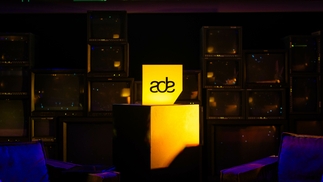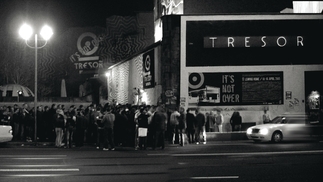GAME CHANGERS: DAVE CLARKE 'RED 1-3'
DJ Mag talks to Dave about the track series that propelled him to stardom...

We’re outside the Dylan Hotel in Amsterdam, the night after Dave Clarke’s sell-out ADE party. Your DJ Mag hack is somewhat the worse for wear — having attended said party until the bitter end, stealing one of Dave's bottles of vodka from his rider, and drinking it with DJ Mag camera supremo Tom Finn — but we still manage to grab the techno legend to talk about his Game Changers (amongst other topics): the amazing series of 'Red' techno records he released in the mid-'90s.
Dave lives in Amsterdam now, and has done for the past six years. He was brought up in and around Brighton on the south coast of England, although the first international gig he played was actually in Amsterdam — and he had half an eye on maybe moving to Holland’s most famous city ever since that first trip nearly 25 years ago.
A somewhat disaffected teenager into punk, post-punk and hip-hop in the '80s, Dave got into music production at a young age. Back in the late '80s, you couldn’t just buy a laptop with music-making software on it — you had to dedicate yourself to acquiring assorted bits of analogue hardware, and work out how to wire them all together — as well as what the equipment did.
Dave started making his own productions, and got a release (‘I Like John’) signed to XL Recordings under the name Hardcore. XL were really plugged into the hardcore rave scene at the time — they’d just signed SL2, of ‘On A Ragga Tip’ fame, and also some act from Essex called The Prodigy. “That [Hardcore] record sold really well, went really high up the specialist sales charts, and it was licensed to R&S,” recalls Dave. “[Belgian label] R&S then asked me to come over to do a 12” for them, which I did under the name Directional Force.”
Again, the track did comparatively well, but Dave was frustrated that he wasn’t able to release as much music as he wanted. He set up his own label in 1992 to remedy this — Magnetic North. “I went under so many different guises for the label, from the gabba Fly By Wire to Graphite, Ortanique, again Directional Force — I kept that name alive there,” Dave tells DJ Mag. “I also brought other really good artists on board like Cristian Vogel, Woody McBride, Roland Casper, doing really cool 12s.”
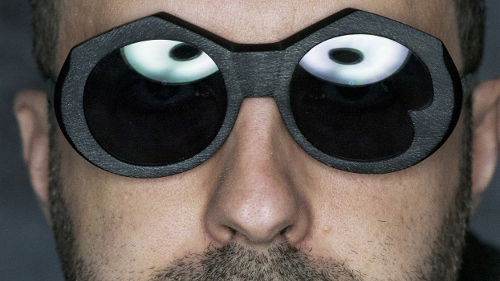
The Magnetic North label was pioneering — it even put out one of DJ Hell’s earliest releases — but Dave didn’t really want to just be a record label chief. He had some releasable tracks stacking up, and shopped around for a deal. He wanted a commitment from a label to put out a few releases — not just a one-off — and got a deal from relatively new Manchester imprint Bush Records. “The first one that came out was called 'Red 1 of 3' — there was no grand plan behind it, except to get a record label to commit to releasing three 12s,” Dave elucidates. “If you release 'Red 1 of 3' and then 'Red 2' never came out, then you'd kind of fuck yourself. I did it for that reason.”
‘Red 1’ came out in 1994, but Dave admits that he’d recorded quite a few of the ‘Red’ tracks a fair bit earlier. ‘Red 3’ was actually recorded before ‘Red 2’ and ‘Red 1’,” he reveals. “It’s weird how things work out. And from memory, ‘Red 3’ was initially called in my mind ‘Axiom’ and was gonna come out on Magnetic North. Funny, huh?
“They were recorded on some of the most rudimentary equipment possible, with two megabytes of sample space, going through a keyboard mixer and recorded onto cassette, I think, from memory — at least the first one or two were recorded onto cassette, on a normal consumer Technics tape deck,” he continues, before starting to drill down into the equipment he recalls using at the time.
“For 'Red 1' I think my studio was just in the bedroom,” he tells. “Speakers were painted with car paint — I believe it was a Ford Cortina blue — and then I got some gold glitter and lacquered it all together. I almost poisoned myself by painting it in a very, very small room. They were old Tannoy speakers that I got from a second-hand shop near Brighton station — Mercury MS20s, I think, pretty good speakers. I also used breezeblocks, painted them black. I had an Ensoniq sampler, a Tascam keyboard mixing desk, Technics Spectrum Analyzer, Technics tape deck, and I kept using the money that I was getting from Magnetic North releases for keyboards, so I would have had a [Roland] JD-800 at the time as well, which I was really proud of.
“I was using the Atari 1040 [computer] at that time,” he continues. “I still believe I was using either C-Lab [a precursor to Logic] or Notator or Cubase — probably Cubase. Yeah, it was Cubase, cos I'd switched over by then — and then I think I might have had a MidiVerb II from Alessi, and then I think when I started getting some money in again I bought myself an Alessi QuadraVerb [music effects processor].”
Definitely not as simple as doing it all on a laptop!

With clap-happy beats and tingling hi-hats from the off, 'Red 1' whips up a powerful Teutonic tornado utilising satanic backwards tricknology and scything synth-work. “How long did ‘Red 1’ take to record? It probably took me as long as it takes to make all my music, which is maybe two or three days,” Dave says.
As soon as it was released, the masses started clamouring for ‘Red 2’. When it dropped, its alien voodoo sonics — creeping up on you before locking you into an unstoppable futuristic groove — were fashioned, wizard-like, into a dynamite track subtitled 'Wisdom to the Wise'. What kind of sorcery was this, DJ Mag asks Dave?
“I don't know... you know when you go into a shop that sells art, or poster reproductions, and you have these people who follow you around and tell you what they think it represents?” he says. “It doesn't matter what they tell you — it's what they feel it represents. I don't analyse my own music — I let that free, for other people to feel what it represents for them. I just do what I do, and let the music lead where it should be going. Sometimes I get it right, and sometimes I don't. It seems I got it right there, and it just came out.”
The name 'Wisdom to the Wise' came from a lyric to an old house track, Dave explains. “I thought, 'That's such a cool saying, y'know?’,” he says. “No matter how clever you are, you can always do with a little bit of extra wisdom — so it's kind of funky.”
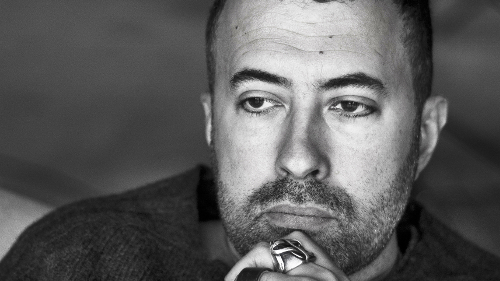
Not only was ‘Red 2’ a killer release, but it had served the purpose of getting Dave’s name much more out there. Although the stereotype being portrayed of him in the dance press at the time was as a slightly controversial, polarising figure — a grumpy curmudgeon, even. Someone who was vehemently anti-drugs.
On the B-side of ‘Red 2’ was ‘The Storm’, which hijacked some quotes from French Renaissance writer François Rabelais — some choice lines were recited robotically over a thumping techno backing, vocoder style. “That was from a 17th century book which I found in a flea market in Kemp Town up the road [in Brighton],” Dave says. “Actually, my ex-wife found that one. I then adapted it into an ironic anti-drugs stance — which no-one got, cos everyone was off their face on drugs right then, and if I’d presented... this is why I got this bullshit Tory thing ‘He must be a Tory cos he doesn’t like drugs’. No, I’m not a Tory — I just don’t like drugs.”
In interviews he’d mouth off about his love of cigars, whisky and fast cars, and disdain for excessive drug use — the anathema of the prevailing wisdom on materialism and consumption at the time in the mid-'90s. In fact, Dave has an extremely dry sense of humour and an inbuilt counter-cultural distrust of the media. His almost punky take on the techno scene, something that the great radio DJ John Peel saw in him as a kindred spirit that led Peel to dub Dave ‘the Baron of Techno’, has seen him in good stead over the years as he’s helped build the international techno movement that’s now stronger than ever.
But surely Dave must accept that a fair portion of the crowds he plays to are off their faces on drugs? “If I had a choice between people being in the crowd losing it to the music, or losing it because of drugs to the music, I’d rather they lost it to the music,” he says. “But you have to be realistic, and realise that a lot of people have a lot of pressure, they don’t always have the ability to tune out their minds from what’s going on in such a way, so they utilise whatever is available to them to do that. I’ve had to relearn and not be judgemental on that, which I am now cos everyone’s a responsible adult, i.e. they’re responsible for themselves. If that’s what they want to do, then who the hell am I to say ‘You can’t do that?’ I’ve chilled on that — it’s just not a choice for me.”
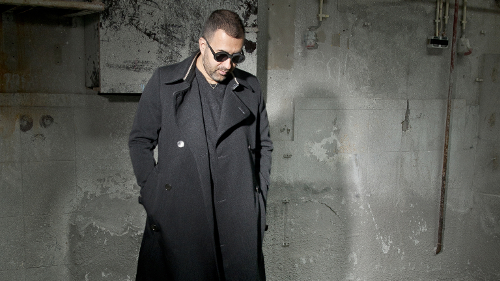
The anticipation for ‘Red 3’ built week by week. But this wasn’t down to deliberate, contrived hype. “I didn’t keep it dangling there for the sake of winding people up,” Dave remembers, “it just took its time to come out. Like many artists at that time, I had some rather interesting accounting techniques where I wasn't being accounted to properly. I was told that 'Red 2' only sold a thousand copies or 1200 copies, that sort of stuff, so in the end I had to take that through to the courts — so we had MCPS sitting on their doorstep, and in the end I had to take them to court as well.”
In dispute with Bush, he signed to DeConstruction, a subsidiary of major label BMG. Royalties disputes and new contracts meant that ‘Red 3’ didn’t appear until the following year. “I have to admit at one point I was getting really sick of the anticipation,” says Dave. “Nothing DeConstruction did was wrong whatsoever, but it took a while for ‘Red 3’ to come out and everyone was going ‘Oi, when’s ‘Red 3’ coming out, what’s going on?’ It was tough on me in a way.”
When ‘Red 3’ did appear, it was like a seismic full-on thunder-clap. “Yeah, that was inspired by Jeff [Mills],” says Dave. “If you listen to the bass, drum and hi-hat patterns, it was totally inspired by Jeff. He had 'Waveform Transmissions' come out, and he was really pushing the drum machine to its limit — and I loved that. “Underneath I was doing a lot of sub-bass manoeuvring,” he continues, “and I sort of wanted that old Todd Terry house sound as well. I also had a 727 drum machine, which I’d never really had before, but I was really proud to get it. It had really weird sounds, and if you pressurise them and push them they sound really, really good.
I put it all together into a really tough package.”
‘Red 3’ actually got into the UK charts with DeConstruction’s extra marketing muscle (No.45), and Dave’s subsequent journey in the upper echelons of the international dance scene was well underway. “It was all by accident,” he says. “I didn’t think, ‘This is going to be great for anticipation’, I just thought ‘This is great cos I’m going to get a commitment from a record label for three 12s’. It just caused anticipation.
“It had its own issues, but the ‘Red’ series got me noticed,” he continues. “So there were pros and cons. The label did a great job in packaging it, they did a great job in actually handing it to the right DJs, and they did a great job in giving it kudos. Everything needs kudos and good timing. They did that, and I'll always give them credit for that. It got me on the map, and I was again DJing around the world much more.”
